Designing Woman Blu-ray Movie
HomeDesigning Woman Blu-ray Movie 
Warner Bros. | 1957 | 118 min | Not rated | Jun 12, 2018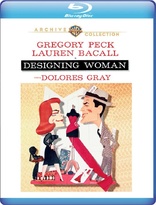
Movie rating
6.6 | / 10 |
Blu-ray rating
| Users | 0.0 | |
| Reviewer | 4.0 | |
| Overall | 4.0 |
Overview
Designing Woman (1957)
After covering a golf tournament in Los Angeles, sportswriter Mike Hagen returns to his New York home with a tan and a fashion designer wife he scarcely knows.
Starring: Gregory Peck, Lauren Bacall, Dolores Gray, Sam Levene, Tom HelmoreDirector: Vincente Minnelli
| Romance | Uncertain |
| Comedy | Uncertain |
Specifications
Video
Video codec: MPEG-4 AVC
Video resolution: 1080p
Aspect ratio: 2.40:1
Original aspect ratio: 2.35:1
Audio
English: DTS-HD Master Audio 2.0 Mono (48kHz, 24-bit)
Subtitles
English SDH
Discs
Blu-ray Disc
Single disc (1 BD)
Playback
Region free
Review
Rating summary
| Movie | 4.0 | |
| Video | 4.0 | |
| Audio | 4.0 | |
| Extras | 1.5 | |
| Overall | 4.0 |
Designing Woman Blu-ray Movie Review
Design for Living Together
Reviewed by Michael Reuben June 17, 2018According to Hollywood lore, the inspiration for Designing Woman originated with a woman
designer, MGM's Helen Rose, who dressed Doris Day in Love Me or Leave Me, Cyd Charisse in
It's Always Fair Weather and
Grace Kelly in High Society. But it was screenwriter George Wells
(Where the Boys Are) who invented
the intricate comic mechanisms of the tale that ultimately
made it to the screen, and Wells won an Oscar for his light-footed ingenuity. Vincente Minnelli
directed DW, which borrows numerous elements from screwball comedy, except that it's never
entirely clear which half of the film's romantic couple is the screwball. Indeed, Wells's script
surrounds the pair with such a varied collection of kooks and eccentrics that they both look
normal by comparison.
Lauren Bacall and Gregory Peck play DW's mismatched lovers, taking roles that were originally
intended to reunite Grace Kelly and Jimmy Stewart after Rear
Window. But Kelly dropped out of
both the project and the industry to become Princess Grace of Monaco, and Stewart didn't want
to do the film without her. Today, it's hard to imagine anyone but Peck and Bacall as Mike
Hagen and Marilla Brown, who have nothing in common other than mutual attraction.
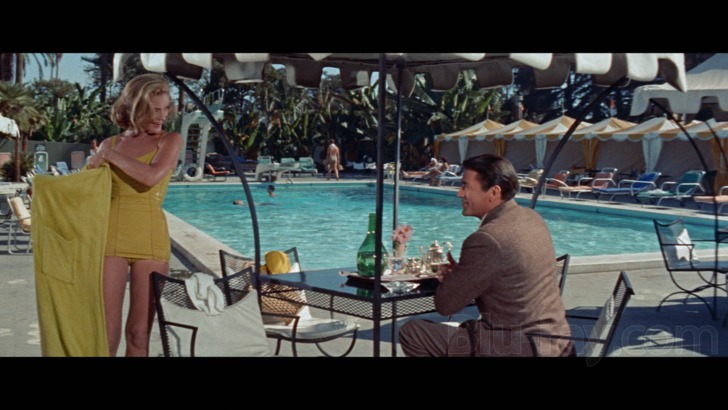
DW opens by breaking the fourth wall, as each main character (and one minor one) addresses the audience, dropping hints about the story they're about to tell and making it clear that each of them has his or her own perspective. Then the film breaks a basic rule of romantic comedy by starting with a marriage instead of ending with one. The newlyweds are sports reporter Mike Hagen (Peck) and clothing designer Marilla Brown (Bacall), both New Yorkers, who meet during business trips to Los Angeles and marry after a lively eight-day courtship. Only when they return home does the pair begin to realize just how far apart their two worlds are.
Mike inhabits a world of ringside seats, cigar-smoking poker cronies, a demanding editor named Hammerstein (Sam Levene) and a crooked fight promoter, Martin Daylor, who wants Mike to stop writing exposés about him . . . or else. (The promoter is played by Edward Platt, who, eight years later, would get his career-defining role as The Chief on TV's Get Smart; his top henchman is Chuck Connors, soon to be known nationwide as The Rifleman.) Marilla inhabits a spacious, tastefully appointed Park Avenue apartment, where she entertains a cultured crew of actors, artists and theater people, including producer Zachary Wilde (Tom Helmore), who just happens to be Marilla's ex-boyfriend. When Zachary hires Marilla to design the costumes for his new musical, it's unclear whether he does so for her talent or as a ploy to win her back.
Mike, too, has an ex, although she doesn't yet know it when Mike and Marilla return to New York. Lori Shannon (Dolores Gray) is a singer and actress, and Mike chooses to inform her of his recent marriage over a plate of ravioli at their favorite restaurant. It would be an understatement to say that Lori does not take the news well. Complicating the situation is Zachary Wilde's decision to cast Lori in the production for which Marilla is designing the costumes. Mike makes the ill-advised choice to conceal their past relationship from his new wife, and, as usual, the coverup turns out to be worse than the crime. Mike finds himself forced into increasingly elaborate machinations to maintain the fiction that he and Lori have never met, especially after his editor closets the sports reporter in a hotel room to protect him from Martin Daylor's goons, thereby requiring Mike to invent the fiction that he's on the road and filing his stories from out of town. Not surprisingly, the fiction collapses in the most embarrassing way possible (a poodle with a taste for shoes plays a key part).
DW is a comedy of character and situations rather than punchlines, but it also has a fair share of physical silliness, with someone from each side of the aisle contributing his portion. Choreographer Jack Cole plays Randy, the choreographer of the show-within-a-show, and his prancing draws Mike's derision until the very end of the film, when Randy's acrobatic dance moves prove valuable in a difficult predicament. On Mike's end, there's a perpetually punch-drunk ex-boxer, Maxie Stultz (Mickey Shaughnessy), who's constantly announcing his comeback and is hired by Mike's editor as his bodyguard. Maxie is instructed to punch out anyone who looks at Mike "cross-eyed", which, from Maxie's bleary perspective, is just about everyone.
Peck and Bacall have a blithely easygoing chemistry that makes the relationship between Mike and Marilla a charming affair even when they're arguing, and Minnelli stages the various comings and goings with his customary aplomb, including a musical number for Dolores Gray, whom he had directed in Kismet. Costume designer Rose provided a seemingly infinite array of colorful attire for her female cast, especially Bacall, whose outfits are every bit as expressive as her dry delivery.
Designing Woman Blu-ray Movie, Video Quality 
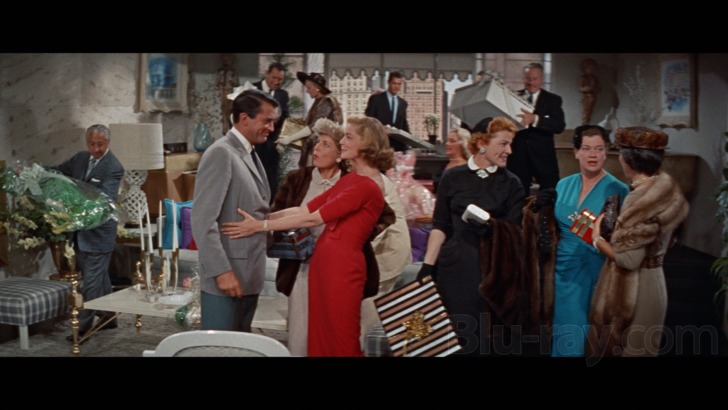
Designing Woman was shot by John Alton, who had previously won an Oscar for his work with
Minnelli on An American in Paris. The film dates
from the era when Eastmancolor stock was
subject to the problematic phenomenon known as "yellow layer collapse" (previously discussed
here), but for reasons at which one can only guess, the
negative of DW has aged more gracefully
than most of its contemporaries. Director Vincente Minnelli was famous for giving specific
processing instructions to the Metrocolor lab that were often at odds with standard practice;
maybe he did something that inadvertently contributed to the element's preservation. In any case,
the negative has yielded a high-quality interpositive, which has been scanned at 2K by Warner's
Motion Picture Imaging facility, followed by color correction using Ektachrome production stills
as a reference. The Warner Archive Collection has applied its customarily thorough cleanup to
remove dirt, scratches and age-related damage. (The extent and importance of such work cannot be overemphasized; WAC's recent release of the
two versions of Seven Brides for
Seven Brothers provided a graphic demonstration of the difference between complete and
minimal cleanup.)
WAC's 1080p, AVC-encoded Blu-ray of DW is vibrantly alive with the richly varied and
carefully composed palette for which Minnelli remains justly celebrated. Lauren Bacall's
wardrobe alone covers most of the spectrum—she wears a different outfit in every scene—and
whatever colors Bacall doesn't wear are included in Dolores Gray's theatrical costumes and the
elaborate creations on display at Marilla Hagen's fashion show. The men's clothing is more
appropriately sedate, but even here the subtly varied shadings of blue, gray and brown bespeak a
close collaboration between the director and his fashion designer (with an assist from the DP).
The environments are equally varied, from the sunny L.A. locales where Mike and Marilla first
meet to the dark and smoky boxing arena, where Marilla first begins to realize just how different
their worlds are. DW may not be as boldly arresting in its use of color as something
like Lust for Life, which was Minnelli's passion
project, but it's just as precise and considered,
and the Blu-ray renders it faithfully.
The image suffers from the familiar softness imparted by Bausch & Lomb's early CinemaScope
lenses, and more than a few closeups exhibit the horizontal stretching dubbed "mumps
syndrome" that wasn't eliminated until several years later when Panavision's lenses became the
standard for anamorphic widescreen photography. Within these limitations, however, it's a nicely
detailed image, rendering such varied environments as the newsroom, Marilla's apartment and
Zachary Wilde's theater with distinctness. Grain is visible but controlled and tightly rendered.
There is a single shot, beginning at about 1:11:30, where the quality drops off drastically, due to
the use of a dupe source to replace a damaged portion of the negative. The rest of the film is so
well-presented that the loss of resolution and increased grain leap off the screen, but fortunately
the shot only lasts about twelve seconds.
Opticals and rear-projection have their usual artificial look, but this is how films were made
before the advent of green-screen and digital compositing. WAC has encoded DW at its usual high
average bitrate, here 34.99 Mbps.
Designing Woman Blu-ray Movie, Audio Quality 
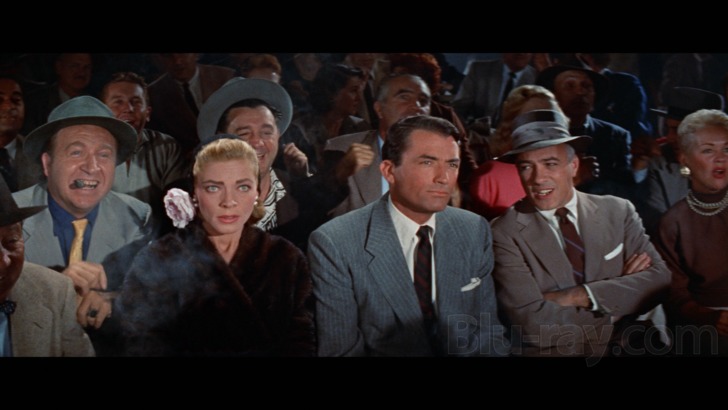
Designing Woman is mistakenly listed at IMDb as having been released in four-track stereo, but no such track exists in Warner's archives. The original magnetic master is a mono mix, which would be typical for MGM's non-musical productions from the late Fifties. The master was well-preserved, requiring only minor cleanup, primarily to eliminate background hiss. WAC has encoded it on Blu-ray in lossless DTS-HD MA 2.0. The track renders the film's energetic dialogue clearly and intelligibly, and it also capably delivers André Previn's light-hearted score and Dolores Gray's performance of "Music Is Better than Words", with music by Previn and lyrics by Betty Comden, Adolph Green and Roger Edens. There are more than a few scenes of frenetic activity, and the soundtrack effectively conveys the necessary sounds. Dynamic range is appropriate for a mono recording from this era.
Designing Woman Blu-ray Movie, Special Features and Extras 
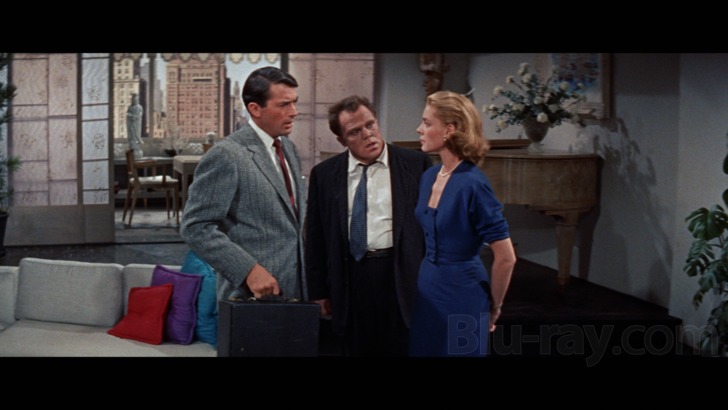
The extras have been ported over from Warner's 2002 DVD of Designing Woman.
- Helen Rose Interview (480i; 1.37:1; 5:12): An opening title card explains the origin of this mock interview with the film's costume designer, with pauses for prepared questions that would be asked later.
- Theatrical Trailer (1080p; 2.35:1; 3:31): Assembled with the old MGM's typical hard-sell panache.
Designing Woman Blu-ray Movie, Overall Score and Recommendation 

No discussion of Designing Woman would be complete without noting that Bacall made the film
while her husband, Humphrey Bogart, was dying of cancer. Indeed, Bogart would not live to see
the competed film. Nevertheless, Bacall would later remember the DW experience fondly, and
there is certainly no trace of her personal tribulations in her performance. She and Peck formed a
lifelong friendship during filming, and their onscreen chemistry is essential to the effervescence
that keeps the film bubbling along to its happy ending. WAC has given this cheerfully romantic
bauble a superior presentation on Blu-ray, which is highly recommended.
Similar titles
Similar titles you might also like

The Band Wagon
1953

Pillow Talk
1959

The Seven Year Itch
1955

Sleeping with Other People
Rental Copy
2015

Phffft
1954

The Gilded Lily
1935

Cactus Flower
1969

Brooklyn
2015

Guys and Dolls
Warner Archive Collection
1955

The Proposal
2009

Bride Wars
2009

Bell, Book and Candle
1958

A Midsummer Night's Dream
1935

Café Society
2016

Frankie and Johnny
1991

Second Act
2018

Please Don't Eat the Daisies
1960

Bros
Collector's Edition
2022

Broadway Danny Rose
1984

Hitch
2005